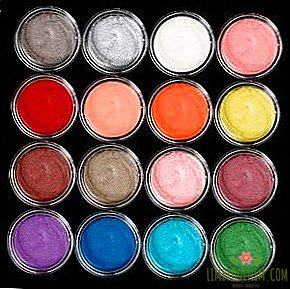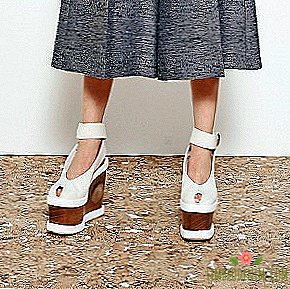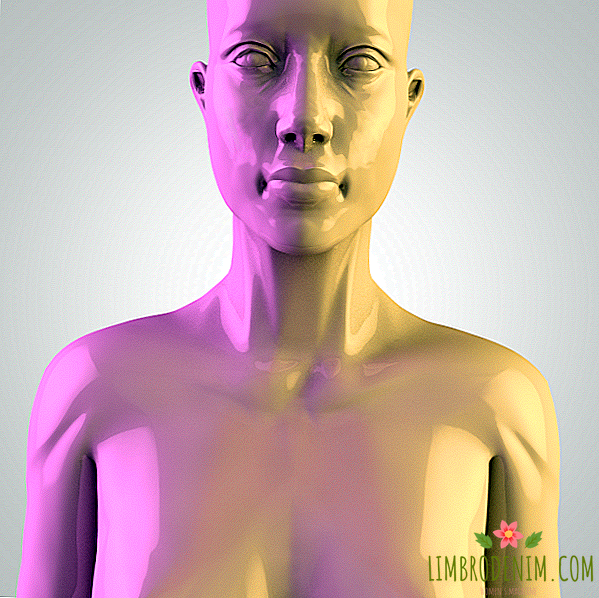Founder of LABORATORIA Daria Parkhomenko about favorite books
IN BACKGROUND "BOOK SHELF" we ask journalists, writers, scholars, curators, and anyone else not about their literary preferences and publications, which occupy an important place in their bookcase. Today, Daria Parkhomenko, the curator and founder of the LABORATORIA Art & Science Space gallery, shares her stories about favorite books.

I was a child who is difficult to sit still therefore I cannot say that in my childhood I read books, my method of knowing the world was rather experimental. Communication with books ended often unusual, for example, when I was about eight or nine years old, I grabbed the book "History of Impressionism" by John Revald from my mother's desk. Having looked through it, I transferred the paintings of artists to the popular board game "Monopoly", now the essence of the game was to buy works of art, to create branches not of factories, but of collections of artists. With special care, I wrote out the names of the works, their authors, the year of creation, transferred everything to the playing cards. Suddenly, my friends and I learned the names of the Impressionists and their work. For me, this is a very revealing experience of communicating with a book - not only to absorb knowledge, but to immediately convert it into activity.
The active reading period, when I read a lot, was high school and the first years of university. At school, the favorite writers were Dostoevsky, Bulgakov, Jack London - they laid down an idea of life, a cultural base, without which it is impossible to imagine myself now. Philosophy formed consciousness at the university; I had a favorite course in foreign philosophy, where I read Nietzsche, Heidegger, Kierkegaard, Kant, Blavatsky. At the same time, I often went to libraries: to the university, historical, “foreigner,” - the meeting with a rare book created a feeling of contact with a treasure. Delight in finding a valuable book is a feeling that I remember from my student years, and now the search for secret knowledge is important to me.
I work with the scientific art - this is still a rare trend in culture, publications do not appear very often, so there is always an expectation that someone is ready to say something new in our field, I always monitor, I watch the emergence of new materials on topic. Because of the specifics of the activity, books on art and science, including works on quantum theory, neurobiology, computer science, and astronomy, get along on my bookshelf. I have a special relationship with the scientific literature: if I can look at art books, then scientific books require more concentration of attention.
For me, specialized publications are important, fortunately, now almost everything can be found online, for example, favorite magazines Artforum, Leonardo, Palais de Tokyo. Recently, while preparing for a conference on art in space, I downloaded the rare and necessary article from MIT professor on a paid resource - now the library is becoming global. It is shocking that a person, sitting in a remote city or village, with the Internet available, can go to the libraries of the coolest universities in the world. Access to knowledge is now incredible, and this changes the structure of our knowledge, makes a person free to choose a subject of study.
I constantly watch publications, catalogs related to modern art, new technologies, scientific discoveries. Most of my library consists of exhibitions catalogs, biennials, festivals - and this becomes an important tool, an archive, which I use to recall successful solutions, works. I have a collection of Ars Electronica festival catalogs since 1984, for the development of the festival it is convenient to follow the development of technological art in the world, and it is my honor that an article with an analysis of hybrid art with my participation was published in the 2011 catalog.
Probably, I am a very tactile person, touching a real book is a pleasure, from trips I constantly return with suitcases full of books, and each catalog is a material confirmation of the event. Despite the daily habit of consuming information online, I still use a large home library.

Harald szeemann
"With by through because towards despite"
When I chose the path of the curator, Harald Zeeman became my idol. His words that meeting with artists and visiting good exhibitions are the best school, became for me a guideline and instructions for action. This heavy book as an art object came out in limited edition, I brought it from the Venice Biennale. This rare and complete collection of exhibition texts from 1957–2005, notes, exposition plans, explanations of works, personal correspondence with artists — these documents make it possible to understand the ideas and life of the great curator.
For Zeeman, curatoring was primarily an art. He first showed that it is possible and necessary to mix works of art, scientific inventions, historical documents, and called it "structured chaos." Conceptualism also dominated Documenta 5, headed by him in 1972, and he allowed Joseph Beuys to open his "Office of Direct Democracy" in the very center of the exposition. Then installations and performances were established as the main genres of modern art.
Robert Piri, Roald Amundsen
"North Pole", "South Pole"
When I was invited to take part in a scientific and artistic expedition to the Arctic, to Spitsbergen, and my old dream became realizable, anticipating an incredible journey into the ice kingdom, I rediscovered the diaries of the discoverers of Amundsen and Peary.
The real memories of people can be even more exciting than a science fiction about other planets. The North and South Poles is a book about the power of human will, character, and how a person manifests in the most critical situations and conditions. The discoverers showed not only heroism, physical training and equipment of their expedition, but also competed in ingenuity. As Robert Piri said, “reaching the North Pole can be likened to a chess game, in which all the moves leading to a successful outcome are thought out in advance.” I was amazed by the impenetrable determination of the heroes who overcame all inhuman obstacles, risking their lives to take another step, expand the boundaries of the known, reach the abstract point of the Earth’s pole.
And in 2010 I was fortunate enough to take part in a real Arctic expedition, where it was not without adventures: an old schooner, on which we explored glaciers and climate change for a month, locked in ice and almost broke on rocks, we miraculously avoided evacuation and continued our journey . Now I can understand the pioneers of the Arctic and modern glaciologists, for whom work "in the field" is the main motivation for their research and aspirations. Returning to the mainland with new impressions and knowledge, together with artists and glaciologists, we made the exhibition "Ice Laboratory".
Antoine de Saint-Exupery
"Little Prince"
I would take this book with me to another planet if I had to choose one. She brings incredible light and goodness. This is a children's book for adults, which tells about the most important - about love, friendship, kindness, understanding. Rereading it at different periods of life, every time I find the answer for myself, a hint in what happens to me.
Exupery encourages people not to lose such childlike qualities as curiosity, the ability to be surprised, to fantasize, whose manifestations make us happy. This book is very poetic, many expressions have become winged: "Only the heart is sharp-sighted. You will not see the most important thing with your eyes," "Love does not mean looking at each other, love means looking in one direction together."
Dmitry Bulatov
"The evolution of haute couture: art and science in the era of postbiology"
Science art is still a rare interdisciplinary phenomenon, and, unfortunately, there are very few deep works with theoretical substantiation. Therefore, it is especially pleasant that the anthology on science art "Evolution of haute couture" - the work of my colleague Dmitry Bulatov - has been published in Russia and is one of the most complete and informative collections in our field today. "The evolution of haute couture" I put first in the list of references, which I recommend to my students, as well as viewers who want to delve into the understanding of the problems and prospects of scientific art.
Dmitry Bulatov singled out ten sections in which artistic practices that arise at the intersection of art and neuroscience, robotics, IT, biomedicine, and nanotechnology are systematized. Most of the texts in the anthology were specially written and translated into Russian, which is very important for our audience. "The evolution of haute couture" came out a couple of years ago and immediately won the "Innovation" award in the category "Theory, Criticism, Art History".
Stanislav Lem
"The amount of technology"
This work of Lem is difficult to overestimate, it has greatly influenced my professional activity. "The amount of technology" - a study of the moral, ethical and philosophical problems of future technologies, "the study of thorns of not yet existing roses." In our projects, we with artists not only use the latest technologies, but also critically interpret them, reflect on what the future will be, and Lem asked: "Why the future?" - he anticipated artificial intelligence, quantum technologies, space travel, a breakthrough in biomedicine, transhumanism. The very expression "artificial intelligence" belongs to the science fiction writer Lem.
"The amount of technology" is not entertaining science fiction - it is a special futurology philosophy, and now it is even more relevant than in those years when Lem wrote it in the early 60s. Lem is a thinker with whom I would dream to talk and invite him to our scientific and artistic discussions if he were alive. Unfortunately, there are no such thinkers of this level right now.
People's epic of India
"Ramayana"
Now, before Christmas and New Year, I especially want the mood of miracle and magic. I brought this extraordinarily beautiful book of the ancient Indian epic from a trip to India. You leaf through it, you look at colorful pictures, like miniatures, and you are transferred to the world of Rama, Sita, Hanuman, where gods fight, and true friends commit heroic deeds. "Ramayana" draws the image of an ideal ruler and hero, proclaims the unchanging victory of good over the forces of evil. In India, the Ramayana, like the Bible, lays down the basic life and moral values. Practicing yoga and traveling to India naturally induces a deeper understanding of the basis of culture. Ramayana is the first step, the next is Bhagavad-gita and Vedanta, the quintessence of spiritual wisdom in India, which teaches man self-awareness.
James westcott
"When Marina Abramović Dies"
We met Marina Abramovich in 2010 and started working together - they translated her performance "In the presence of the artist" into a new technologically equipped version - "Measuring the magic of sight". For two years of work, we became friends, Marina is a man of incredible strength and rare charm, it is impossible not to fall in love with her. The book "When Marina Abramović Dies" is a biography, very frank and intimate, she tells about the life of the artist, her path since childhood, about her family and lovers, about her attitude and becoming as an artist, as well as many stories and memories about how her performances went and how the audience reacted to them.
Now there are many publications and catalogs of creativity of Abramovich, but it is this book that gives an idea of it not only as an artist, but also as a strong man, but at the same time very sensitive and vulnerable. The author of the biography even recorded many of her jokes, Abramovich really loves to start every meeting with a funny story or anecdote. Now she has become a super popular diva, there are many myths and even scandals around her, this book also debunks many myths about her, shows the real Marina.
Rolf Pfeifer, Josh C. Bongard
"How the Body Shapes the Way We Think"
For several years I worked closely with neuroscientists and neurophysiologists, we introduced artists to the laboratories of the Kurchatov Institute, so I read books about consciousness, memory, thinking processes. One of my favorite books is “The Brain Tells: What Makes Us People” by Vileanura Ramachandran and “The Man Who Took His Wife for the Hat” by Oliver Saks.
We have already implemented a series of neuroscience projects, but I continue to explore the topic and buy books with new approaches. One of the latest finds is the MIT edition of How the Body Shapes the Way We Think, which I brought from Germany. The book raises questions about the possibility of the existence of artificial intelligence, new approaches to the study of the connection of the body and brain. The authors smash the Cartesian priority of consciousness "I think, therefore I exist" and argue that thought is inseparable from the physical body, and our body greatly influences our consciousness.
Kazimir Malevich
Collected Works
Everyone knows about the value of Suprematism and Malevich’s contribution to the culture of the 20th century, but few read his theoretical works, and they deserve attention. Malevich is a complex and bright artist, a little crazy. When he completed his Suprematist project, he stopped painting and devoted ten years to writing manifestos, as a scientist created a theory confirming his vision. For me, his writings are a rare example when an artist creates a contextual verbal environment around his works, which is now largely laid on the shoulders of curators.
Roger penrose
"The new mind of the king"
Last year, when I was preparing the exhibition "Quantum entanglement", I explored the topic of artificial intelligence and quantum phenomena. This non-fiction book came to me not on the advice of scientists, as one would expect, but on the recommendation of the artists of the Yekaterinburg group "Where the Dogs Run" - they are true new Leonardo, poets-artists and inventors at the same time.
The book is that our consciousness is fundamentally different from all that can be modeled by a computer. According to Penrose, cars will never learn to "understand", they will never have "insight" or "creativity." The book is devoted to hypotheses and guesses, not results, and, perhaps, therefore, so friendly to the reader. Penrose shows that philosophers need quantum theory to understand physical reality, present the most important experiments and formulas in an accessible form.
Despite the tasteless, repulsive design of the national edition of this book, which I immediately wrapped in paper, the contents of the book and Penrose's language are extraordinarily attractive, and his ideas inspire.




